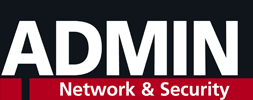The UDP-based Quick UDP Internet Connections (QUIC) protocol comes with mandatory TLS encryption and promises faster speeds.
Keycloak is a robust and mature project that provides a modern single sign-on authorization experience and centralized authentication of your apps.
Lithnet Password Protection for Active Directory provides flexible rules beyond that possible with group policies alone and prevents the use of previously compromised passwords.
The Domain Name System is repeatedly the target of or is leveraged for attacks on corporate infrastructures; however, it also lets you protect corporate networks against attacks and malware. The Blocky DNS server sets up quickly to secure DNS queries and DNS filtering for corporate networks.
Three IAM security misconfiguration scenarios are rather common: allowing the creation of a new policy version, the modification of a role trust policy, and the creation of EC2 instances with role passing. We look at ways to avoid and detect IAM security holes.
A Helm chart is a template of several parts that defines, deploys, and upgrades Kubernetes apps and can be considered the standard package manager in the Kubernetes world.
Nitrokey hardware authentication devices aim to raise data encryption, key management, and user authentication security to the next level.
DMARC combines the abilities of SPF and DKIM to safeguard and protect against spam and phishing and allows targeted configuration according to company policy.
Wireshark and a combination of tools comprehensively analyze your security architecture.
The MITRE ATT&CK and D3FEND knowledge databases provide useful techniques for securing your IT infrastructure.











